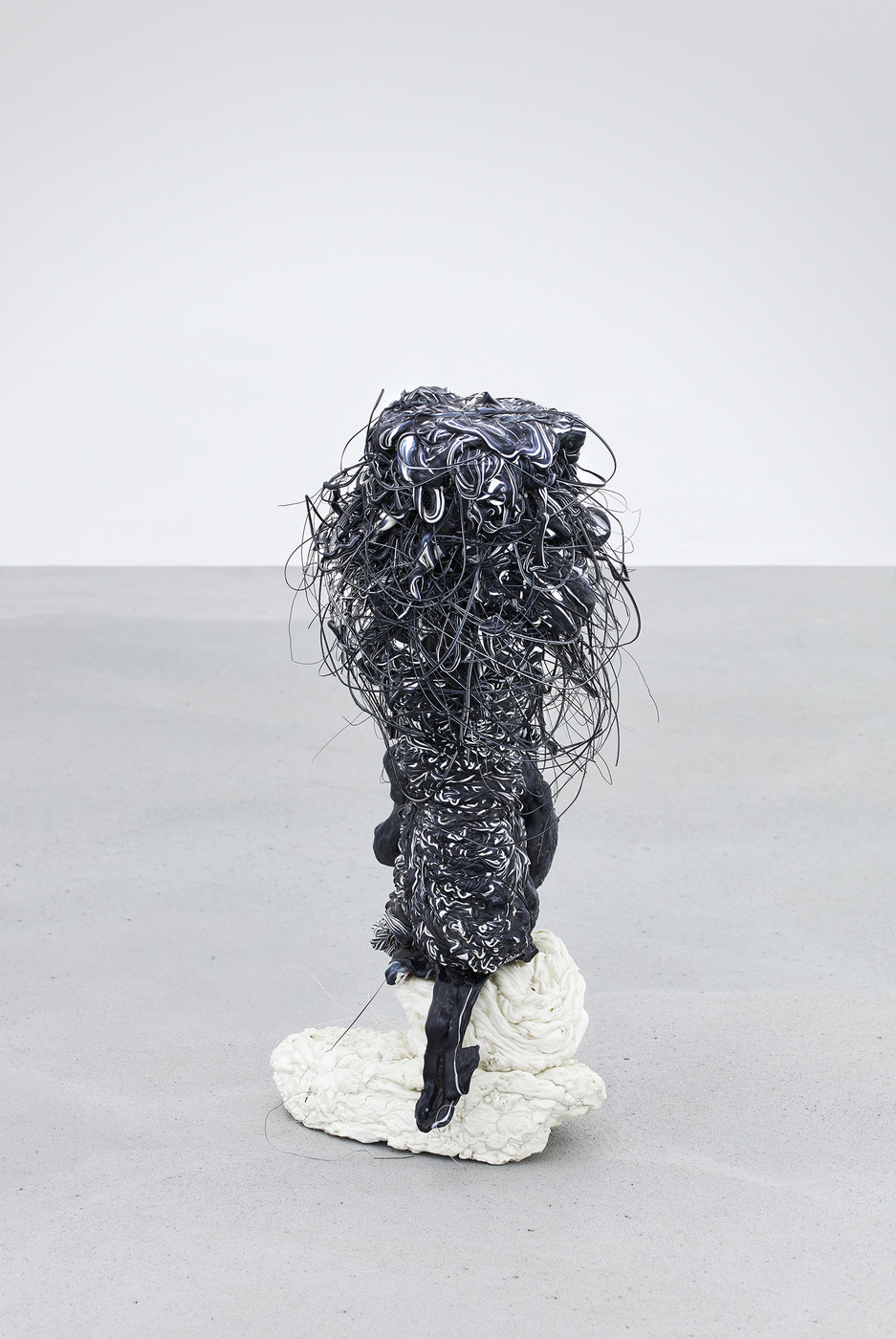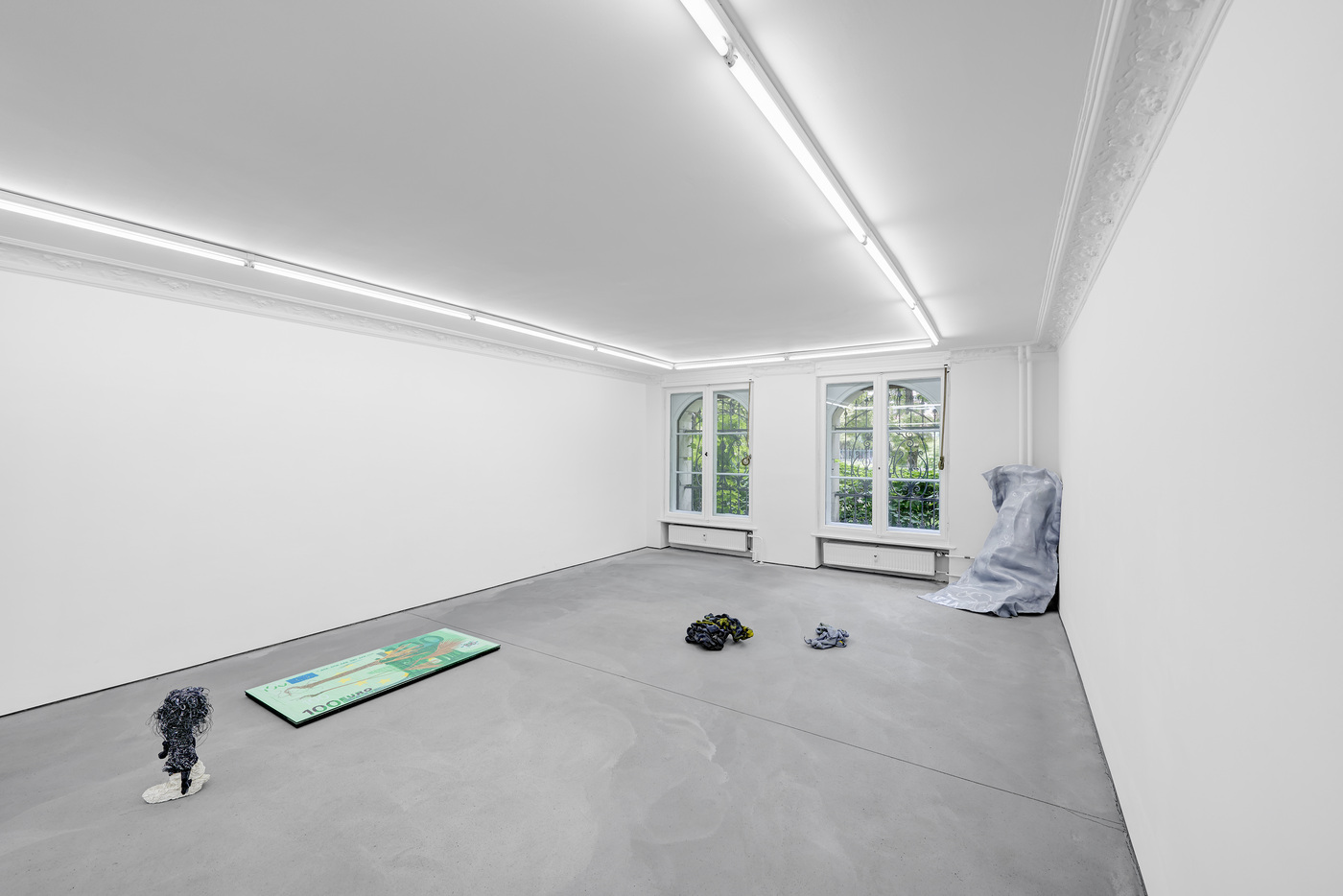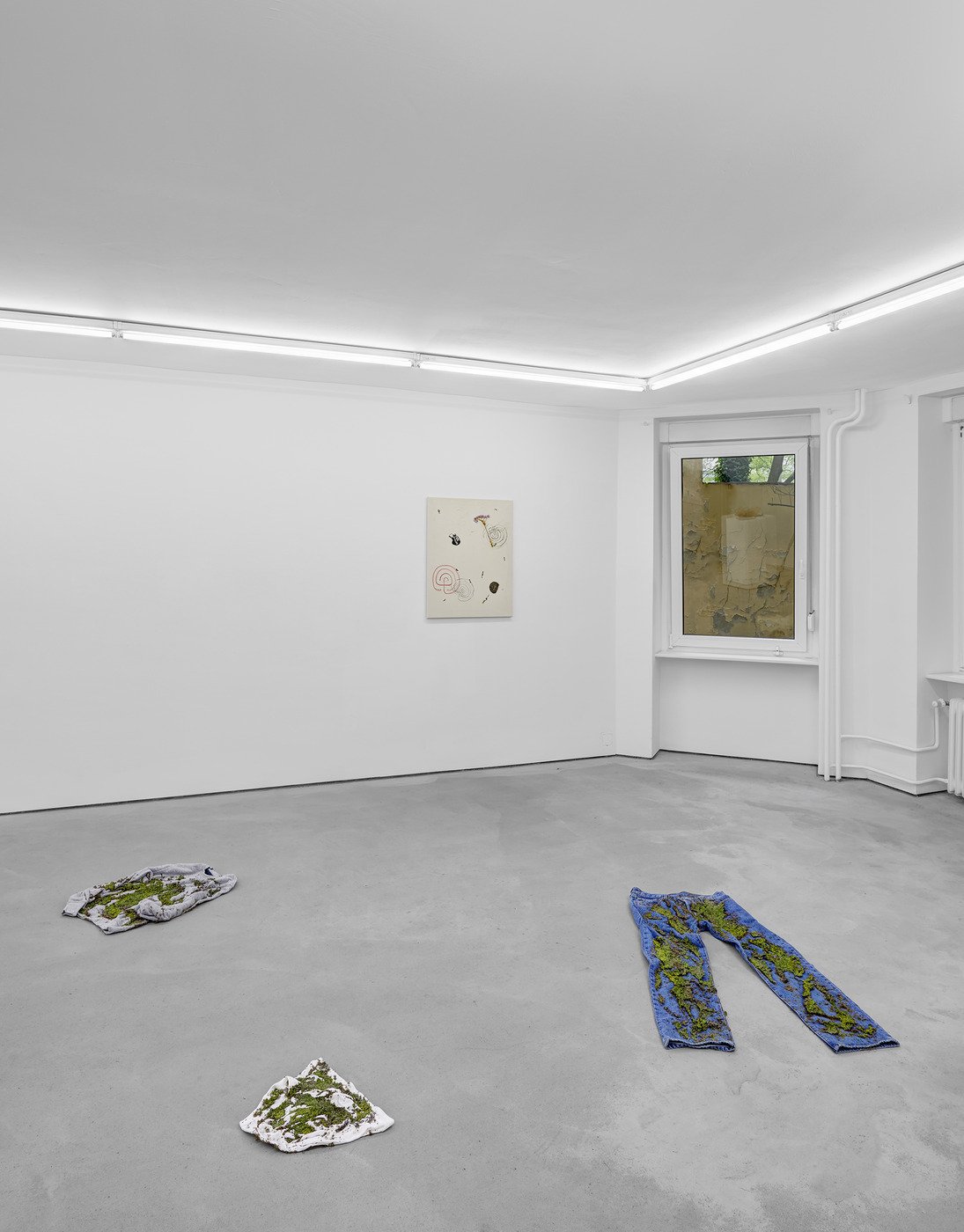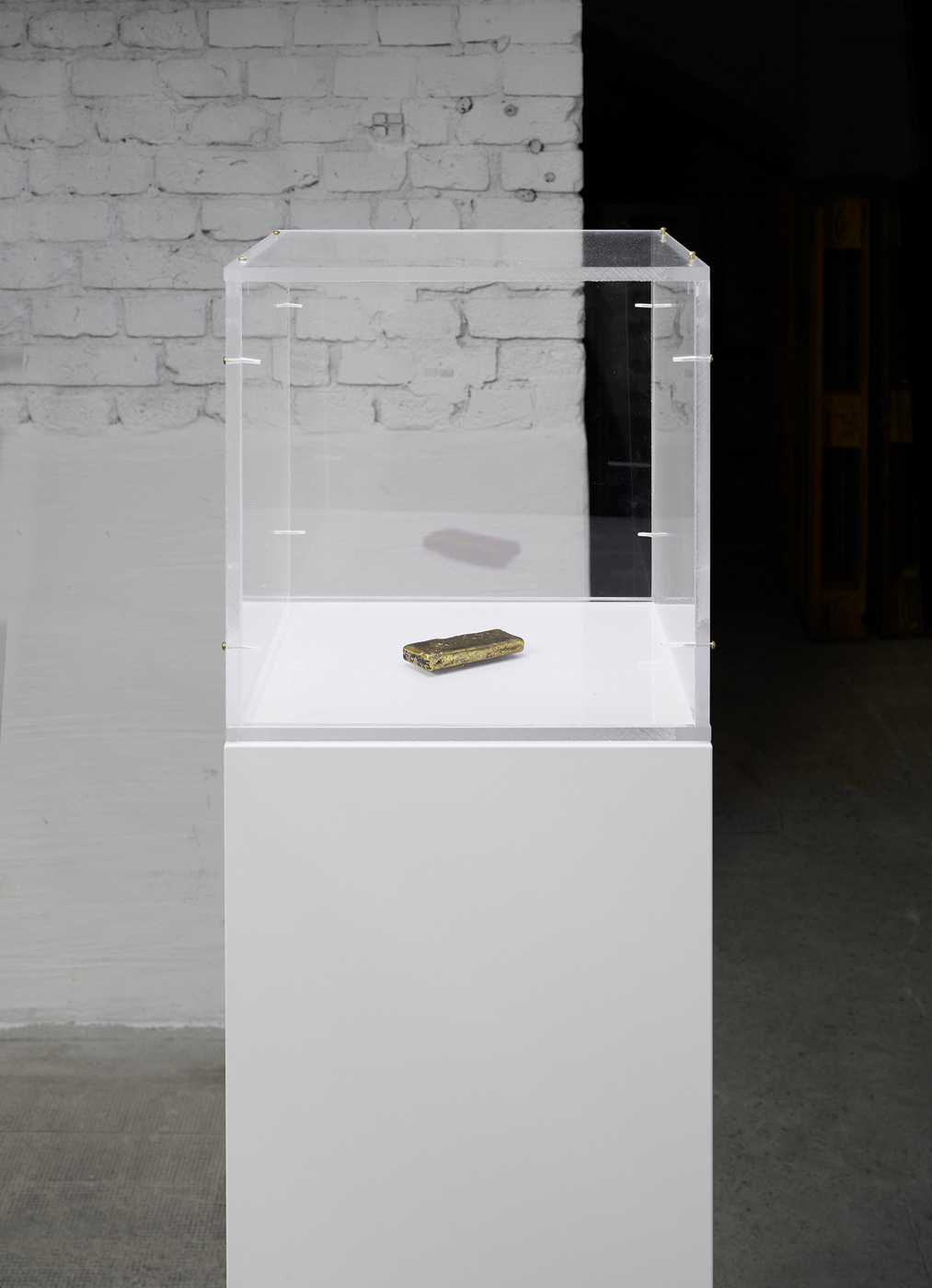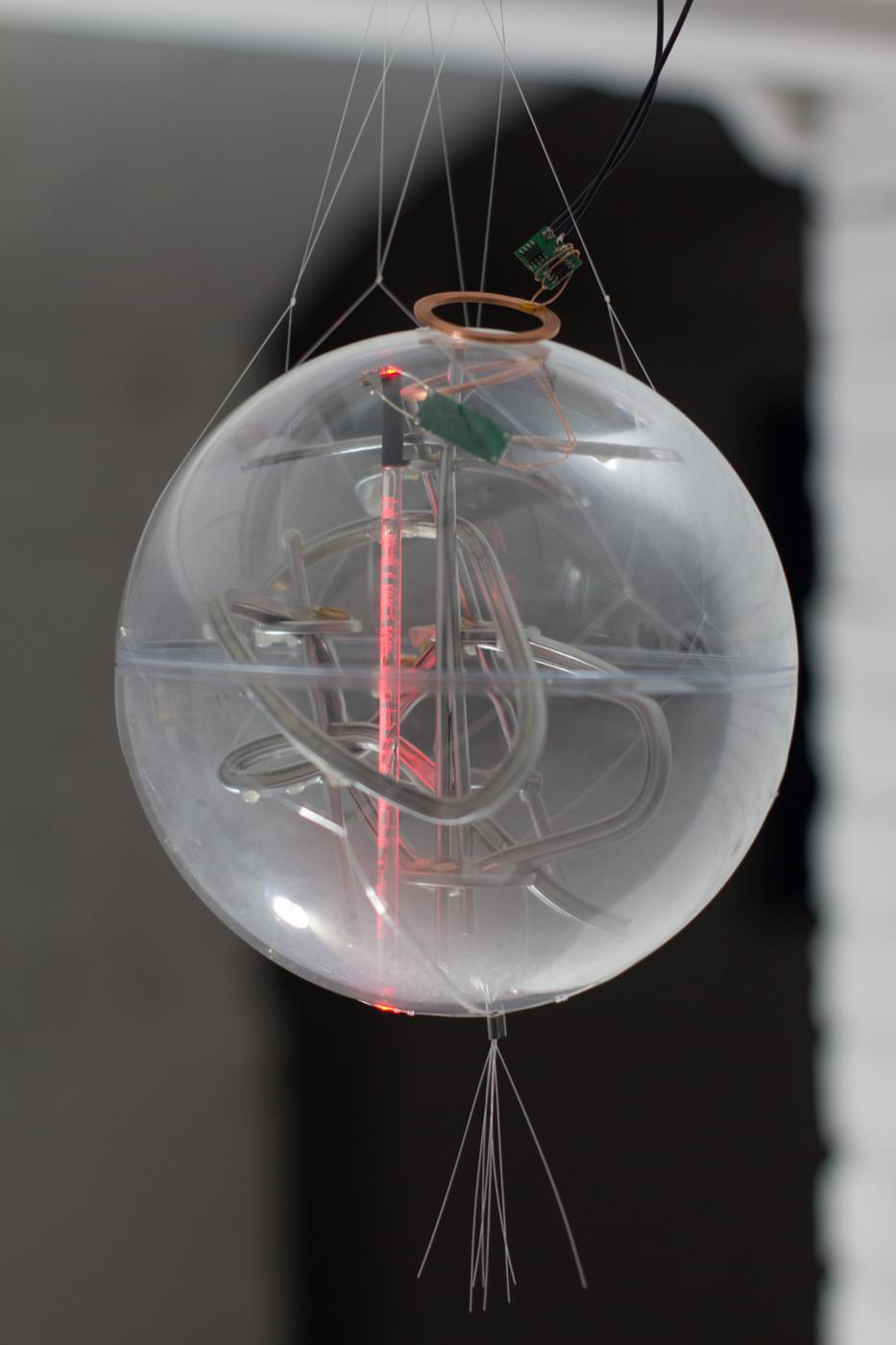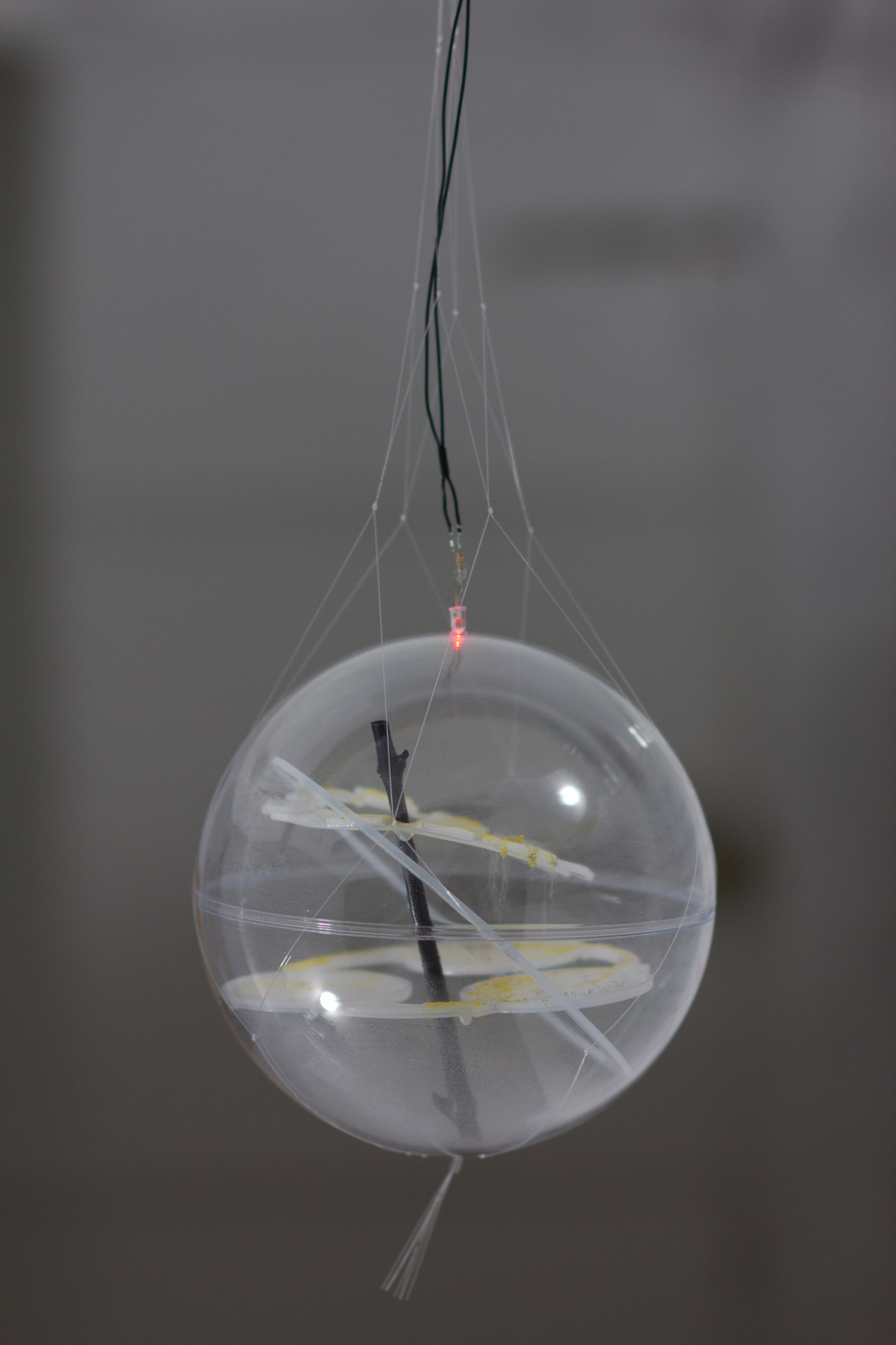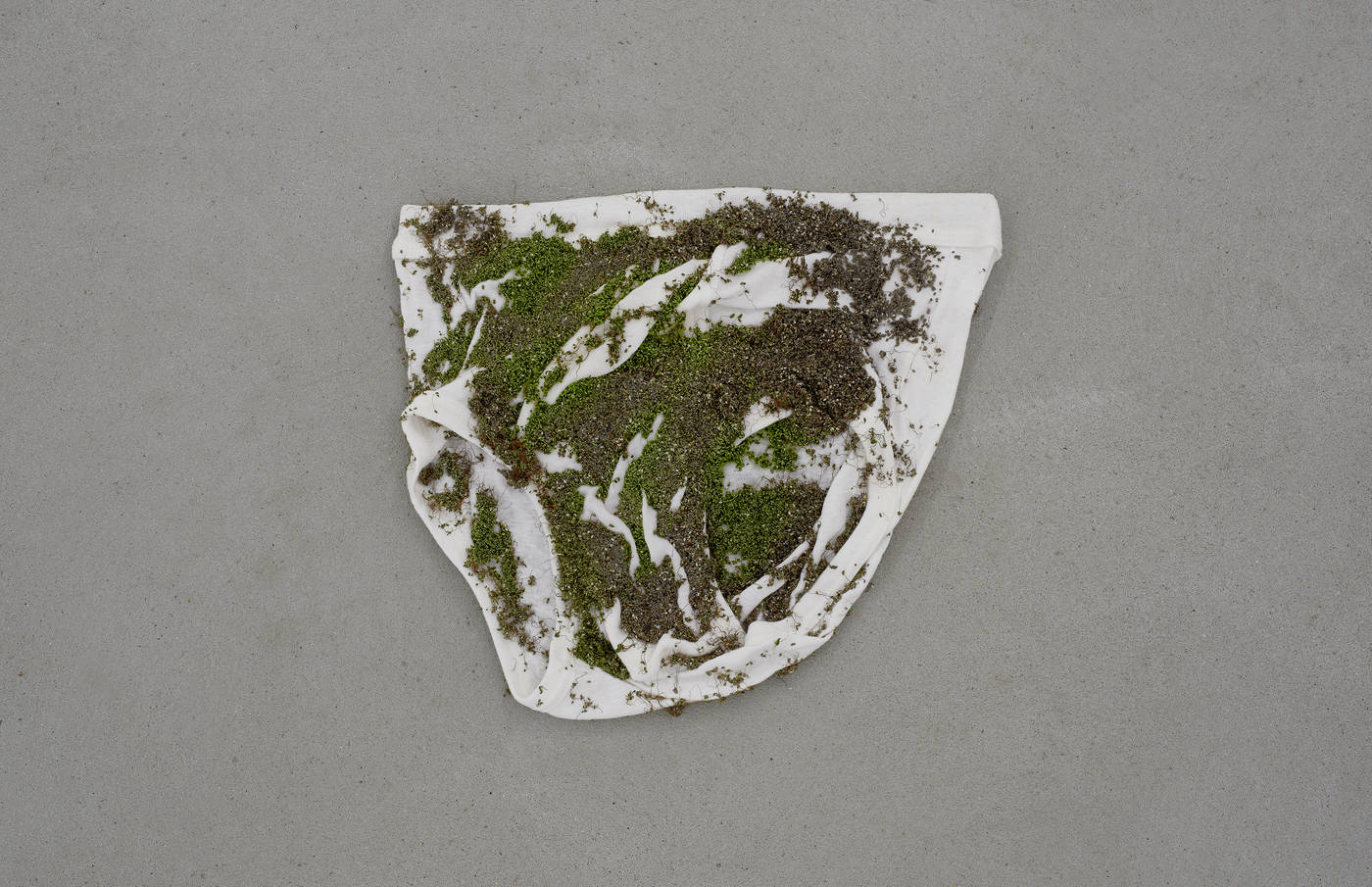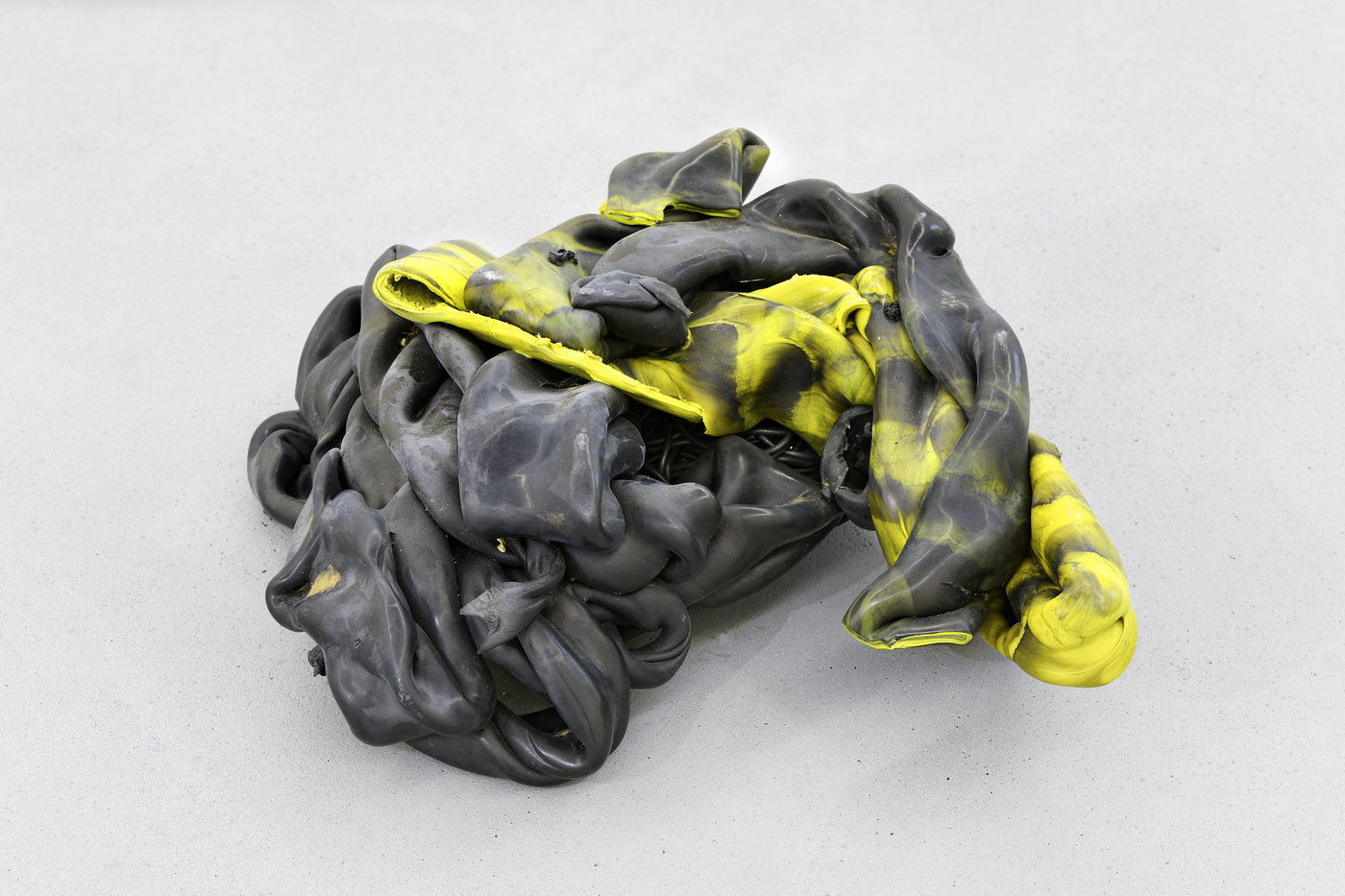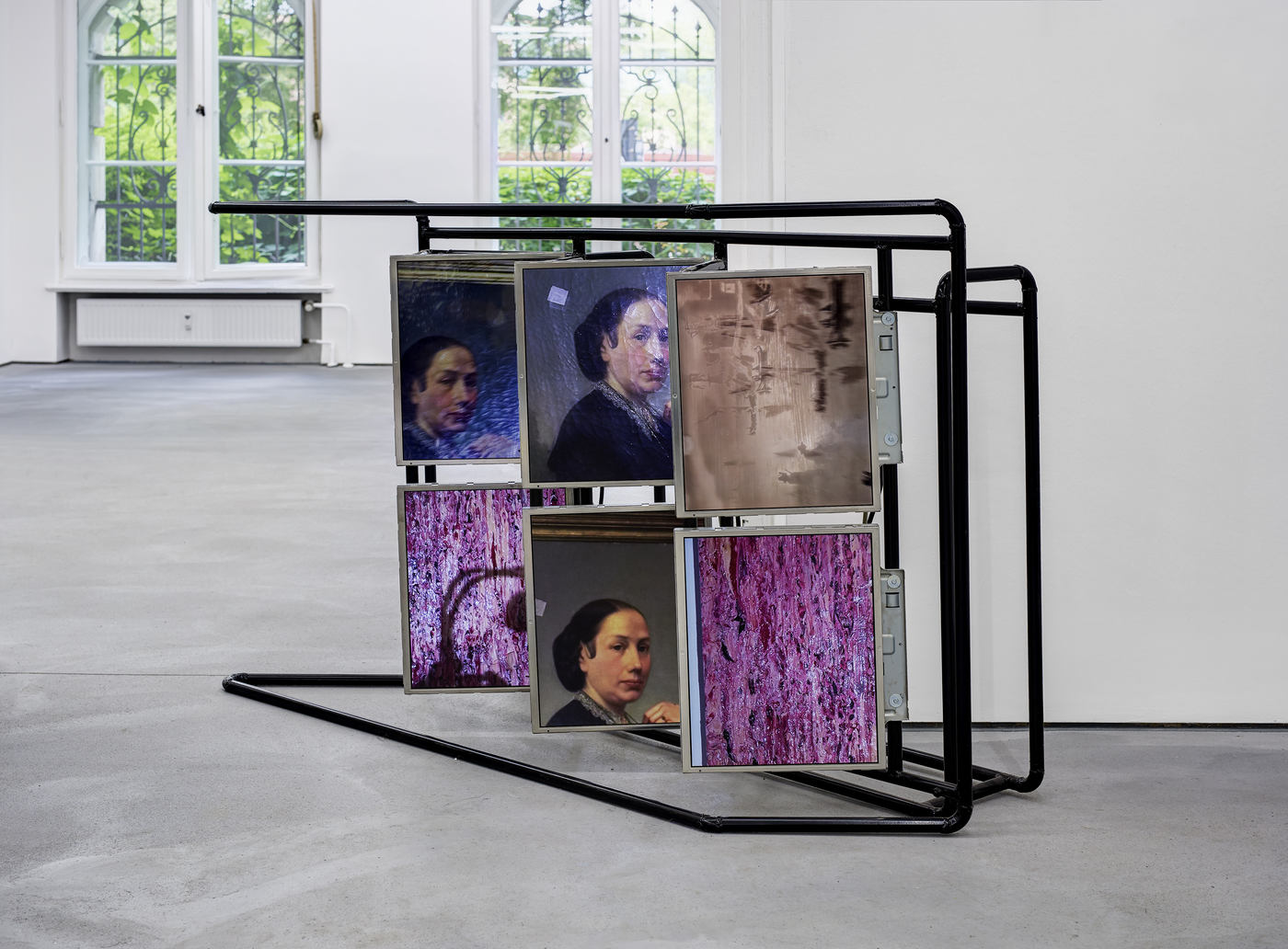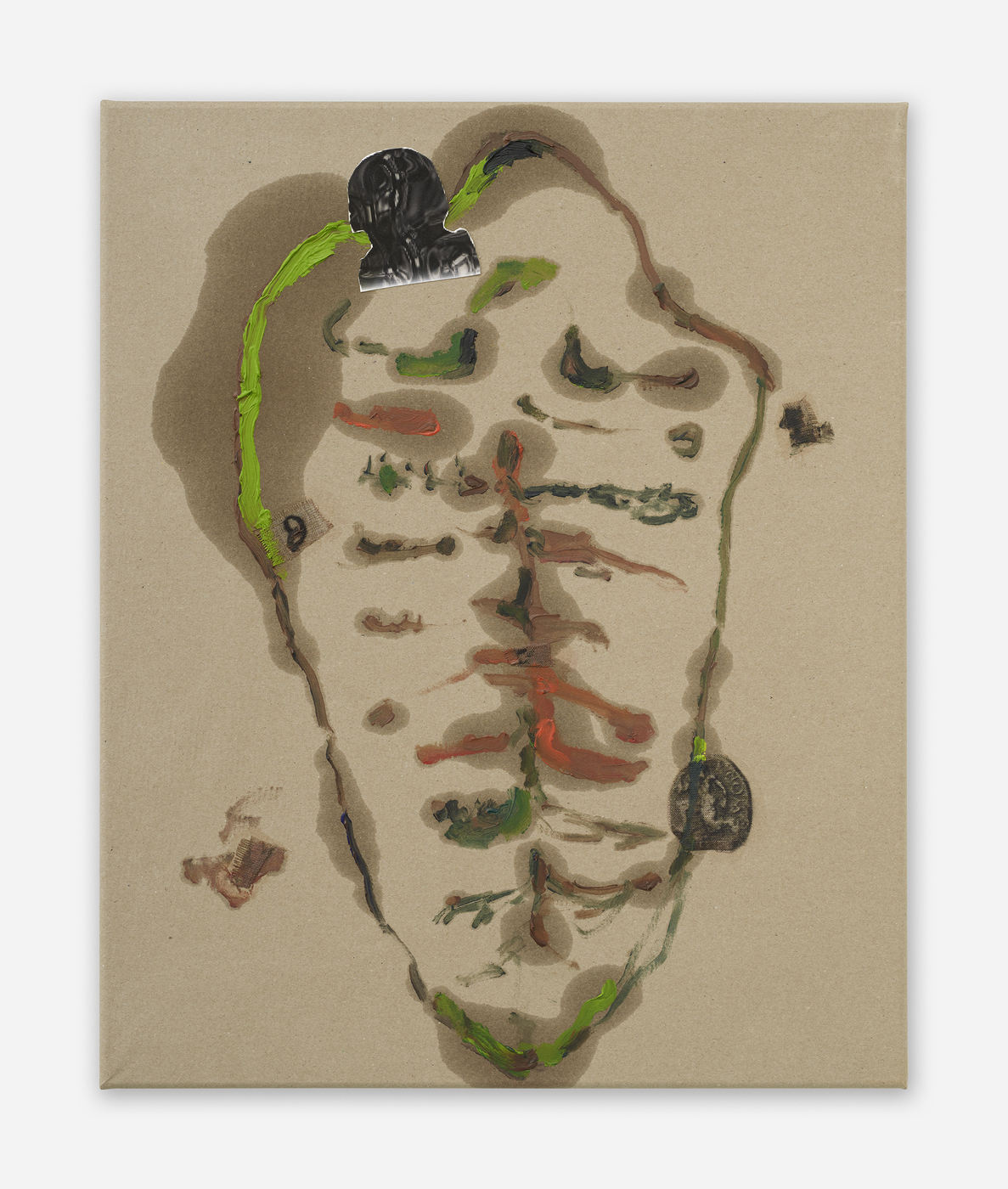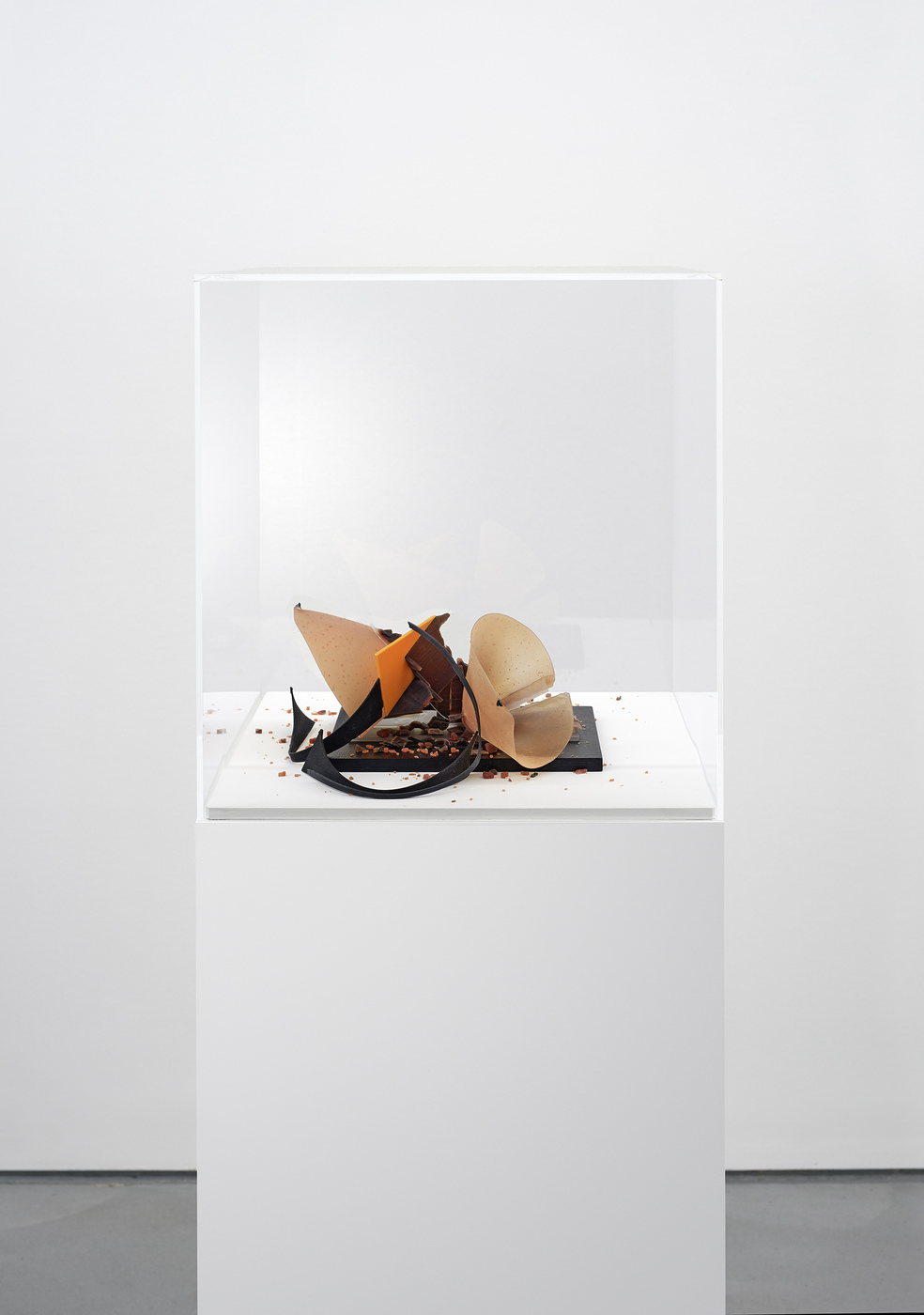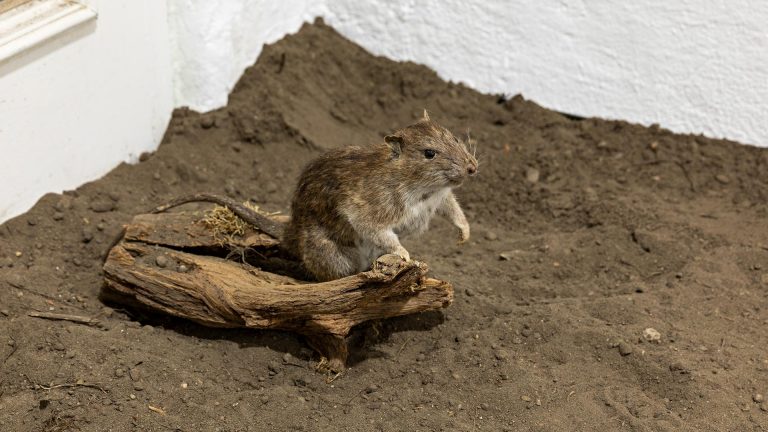Artists: Nina Beier, Juliette Bonneviot, Nina Canell, Bea Fremderman, Rubén Grilo, Tamen Pérez, Samara Scott, Jenna Sutela, Marianne Vierø, Dan Walwin
Exhibition title: Inflected Objects #2 Circulation – Otherwise, Unhinged
Curated by: Melanie Bühler
Venue: Future Gallery, Berlin, Germany
Date: June 26 – July 30, 2016
Photography: Mathias Kolb, all images copyright and courtesy of the artists and Future Gallery, Berlin
“And thus nothing is left but these enormous movings around. Objects appear and disappear like fins of dolphins on the surface of the sea, and objectness gives way to sheer obsolescence. What is important is no longer the object, a concretion inherited from the codes, but metamorphosis, fluidity. Not a dolphin, but a trail, an energetic trace inscribed on the surface.” (Jean-Francois Lyotard, Energumen Capitalism, New York, 1977)
In 1957, Roland Barthes wrote that “more than a substance, plastic is the very idea of its infinite transformation […] it is ubiquity made visible […] less a thing than the trace of a movement.” Today, that ubiquity reaches to the center of our oceans, which are clogged with plastic. And as this plastic gradually breaks down into smaller particles it is swallowed by fish that we end up eating, which is to say, our waste is being fed back to us.
Materials and substances circulate once we dispose of them. They spill out, transform in unpredicted ways or find unexpected applications: birth control pills move through our bodies and into the water, dispersing hormones that can alter the sexes of fish; three-legged frogs emerge as a result of the complex interplay of a diminished ozone layer, agricultural pesticides and pharmaceutical residues; and plastic bags become prized for nest building by birds seeking increased status during courting rituals. Strange metabolisms and forms of re-use characterize the flows of materials as they move from being goods to becoming parts of bodies.
Recently, the term “circular economy” has surfaced for advocating a new way of thinking about the flow of materials. It refers to a logic in which goods are seen as containers for materials that are only temporarily consolidated and will be reclaimed as assets as soon as a product cycle ends. In this future scenario, the status of consumer objects will be one of constant transition. Liquid consumption will replace ownership and intermittent access will replace belonging under the pressure of the constant movement demanded by capitalism – a trend that is already foreshadowed by the current “sharing economy”. Goods are rented, loaned and leased rather than owned by the user; goods become services as their assets, the materials that they contain, need to stay ‘in the hands’ of the companies producing them. Accordingly, much of the work of managing materials within circular economic models will be comprised of surveilling the status of these distributed resources through networked technologies – a situation that raises questions about privacy, data management and growing energy consumption.
In the context of these changing models, the exhibition proposes an understanding of art objects as transient things, assemblages of materials whose destinies remain unknown, and as propositions for assimilation and disintegration. At a time in which the extraction of value from every available asset seems the dominant imperative, the artworks here display forms of waste, non-use and degradation.
Material is regarded as matter that goes beyond the categories of the living and the dead as it creates its own paths on which the organic and the inorganic meet. If control over our bodies is increasingly asserted through chemical substances, and if the movement of goods is subject to more and more surveillance, questions of ownership and access need to be re-thought when it comes to the matter constituting and surrounding our lives. In circular economic thinking, linearity needs to be replaced by circularity. However the exhibition acknowledges more complex forms of material flows: life cycles that cannot be predicted, and material currents that go wayward, run upstream, dry out or disassociate.
The exhibition Otherwise, Unhinged is part of Inflected Object’s second chapter on the topic of Circulation and the third exhibition of the series.
Inflected Objects was initiated with the Istituto Svizzero di Roma. The current exhibition is organized in collaboration with Future Gallery, Berlin and is the second exhibition pertaining to the chapter on Circulation, whose first exhibition was a collaboration with the Frans Hals Museum | De Hallen Haarlem. The project is financially supported by the Mondriaan Fund.
Bea Fremderman, Hungry Bellies Have No Ears, 2015
3 of 3, 22k cold crown, plexi, gold screws,
Bea Fremderman, Hungry Bellies Have No Ears, 2015
2 of 3, 2015, 244g gold bar from CPU, pins, plexi, gold screws,
Bea Fremderman, Hungry Bellies Have No Ears, 2015
1 of 3, 2015, 2500g electronic scrap, plexi, gold screws
Jenna Sutela, Orbs, 2016
Physarum polycephalum, agar and oats on 3d prints in resin and polyamide with silver paint, red light, sphere and net
Jenna Sutela, Orbs, 2016
Physarum polycephalum, agar and oats on 3d prints in resin and polyamide with silver paint, red light, sphere and net
Jenna Sutela, Orbs, 2016
Physarum polycephalum, agar and oats on 3d prints in resin and polyamide with silver paint, red light, sphere and net
Bea Fremderman, Untitled, 2016
Sprouts, found clothing
Bea Fremderman, Untitled, 2016
Sprouts, found clothing
Bea Fremderman, Untitled, 2016
Sprouts, found clothing,
Bea Fremderman, Untitled, 2016
Sprouts, found clothing
Juliette Bonneviot, Xenoestrogens (Sweet Star | Rouge Fatal), 2016
Cadmium, aluminium, silicon rubber
Nina Beier, Greens (€100), 2013
Printed towel, pressed palm, glass, foam, MDF
Juliette Bonneviot, Xenoestrogens (Peace Green), 2016
Lead, cadmium, aluminium, aspirin, oestradiol, soy, pesticide, silicon rubber
Nina Canell, Shedding Sheaths, 2016
Fibre optic cable sheaths
Nina Canell, Shedding Sheaths, 2016
Fibre optic cable sheaths
Nina Canell, Shedding Sheaths, 2016
Fibre optic cable sheaths
Samara Scott, Slut, 2014
Baking tray, Sprite, tights, wrapping paper, fabric dye, glass, coloured sand, turmeric, foil, potatoes, balloons, spray paint, shot glass, bath salts, potpourri
Samara Scott, Pretty stove, 2014
Baking trays, cooking foil, oil paints, gel, bath salts
Dan Walwin, No title, 2016
HD videos, monitors, steel
Tamen Perez, Out of ground, 2016
Linen digital print, paper, everfresh paint on craft paper
Tamen Perez, In a row parallel to the curse, 2016
Canvas and linen digital prints, dried flower, acrylic paint, everfresh paint on canvas
Tamen Perez, Half hear, 2016
Acrylic and everfresh paint on canvas
Marianne Vierø, Great Transformation, the Object – Modeled after Naum Gabo’s ‘Construction in Space: Two Cones’ of 1927/37 2/2, 2014-2016
3D printed plastics, filament and plywood under plexiglas vitrine
Bea Fremderman, Untitled, 2016
Sprouts, found clothing
Marianne Vierø, Great Transformation, the Object – Modeled after Naum Gabo’s ‘Construction in Space: Two Cones’ of 1927/37 2/2, 2014-2016
3D printed plastics, filament and plywood under plexiglas vitrine
Nina Canell, Shedding Sheaths, 2016
Fibre optic cable sheaths

